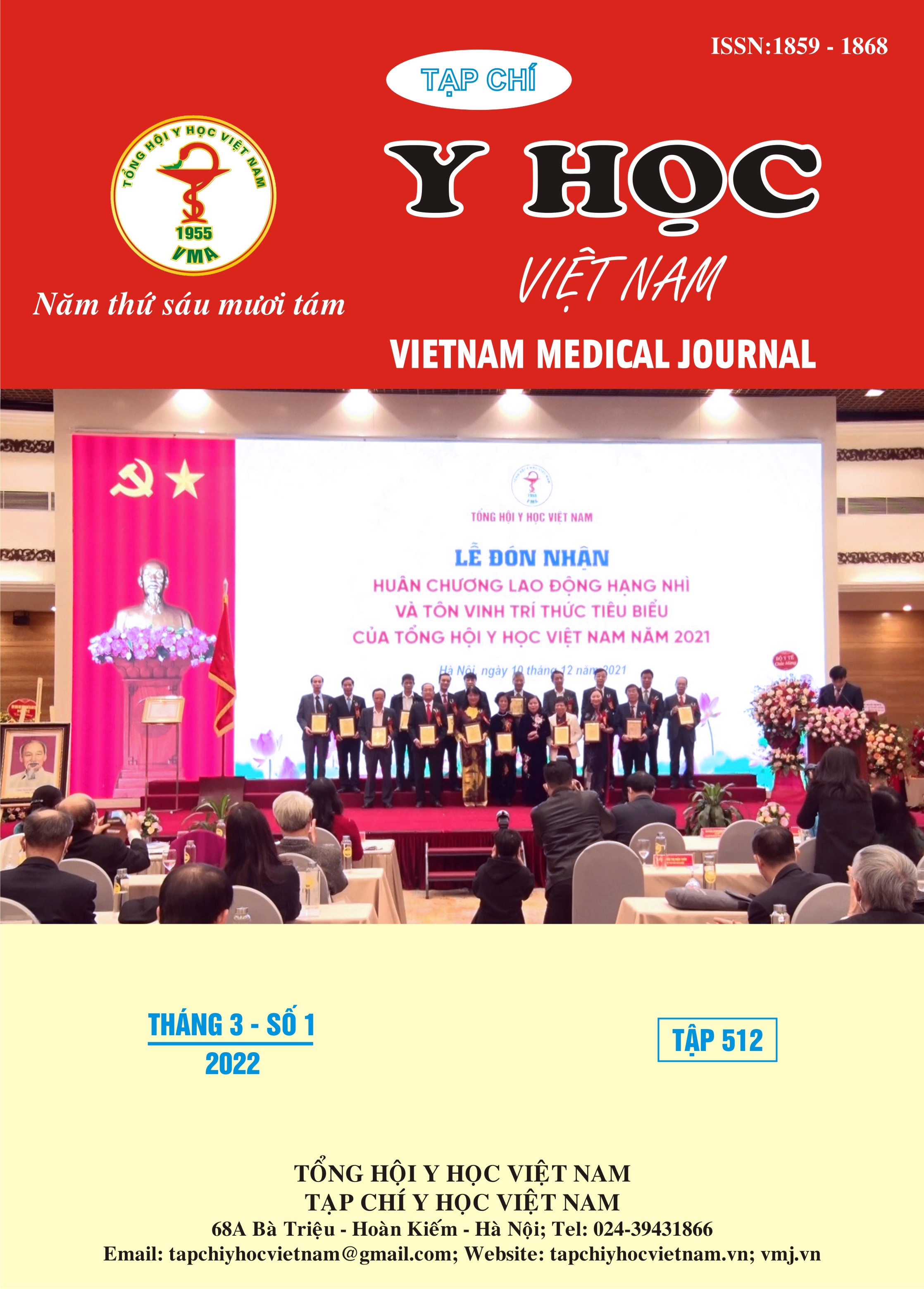CLINICAL AND RADIOGRAPHIC CHARACTERISTICS OF IRREVERSIBLE PULPITIS ON MANDIBULAR FIRST MOLARS
Main Article Content
Abstract
Background: Dental pulp disease is a common oral disease that greatly affects the health, work and quality of life of patients. Mandibular first molars are most often endodontically treated because they are the first permanent teeth to erupt on the dental arch, have a complex root canal system and are also the teeth which play a crucial role chewing function that needs to be preserved. Methods: Patients from 15 to 75 years old with mandibular first molars with irreversible pulpitis came for examination and were treated at Odonto-Stomatology Center, Hue Central Hospital, from March 2021 to July 2021. Study design: descriptive, prospective, clinical intervention and controlled study. Results: The most common cause is tooth decay, accounting for 93.9%. The rate of occlusal caries accounted for the highest percentage (90.9%). Exposed pulp was found in 51 teeth, accounting for 77.3%. The location of pain which was in the damaged tooth accounted for the highest rate, 97.0%. The time when pain occurred much was at night, which accounted for 63.6%. Teeth with irreversible pulpitis had deep dentin caries, accounting for 81.8%. Most of the patients had pain symptoms when stimulated (horizontal percussion, cold test), which accounted for 86.4. Of the 66 treated teeth, there were 21 teeth with curved canals (31.8). The rate of the canal that could be seen clearly on X-ray films accounted for 87.9%, which were higher than the percentage of teeth with no clear canal (12.1%). Conclusion: The study contributed to understanding the clinical and radiographic characteristics of irreversible pulpitis in the mandibular first molar group, in order to find a solution to use endodontic instruments in root canal treatment safely and prolong the life of permanent teeth on the arch, especially the mandibular first molars.
Article Details
Keywords
Irreversible pulpitis, mandibular first molar, endodontics
References
2. Mạnh C (2015). Đặc điểm lâm sàng, X quang và kết quả điều trị tủy răng hàm lớn thứ nhất hàm dưới có sử dụng hệ thống trâm Wave One, Luận văn Thạc sĩ Y học. Trường Đại học Y Hà Nội: Hà Nội
3. Oanh LTK (2013). Đánh giá kết quả điều trị nội nha nhóm răng hàm lớn hàm dưới bằng hệ thống EnDo - Express, in Luận văn Bác sĩ Chuyên khoa II, Trường Đại học Y Hà Nội: Hà Nội.
4. Thắng NV (2018), Kết quả điều trị nội nha răng hàm lớn vĩnh viễn thứ nhất hàm dưới có sử dụng hệ thống trâm Waveone Gold, in Luận văn Bác sĩ Chuyên khoa II, Trường Đại học Y Hà Nội: Hà Nội.
5. Hà LTT (2014). Đánh giá kết quả điều trị nội nha bằng phương pháp sửa soạn ống tủy với trâm xoay Ni-Ti Protaper. Tạp chí Y học Việt Nam, 1: 13-17.
6. Khang N (2017). Đánh giá kết quả điều trị tủy bằng hệ thống trâm xoay Ni-Ti Protaper và máy X-Smart tại Khoa Răng Miệng, Bệnh viện Quân Y 103. Tạp chí Y - Dược học Quân sự, 4: 209-213.
7. Lan NTH (2017). Nghiên cứu điều trị tủy răng hàm nhỏ thứ nhất hàm trên với hệ thống trâm xoay Ni-Ti Waveone, in Luận án Tiến sĩ Y học, Viện nghiên cứu khoa học Y dược lâm sàng, Hà Nội.


